Questions Surrounding The Assassination Of Abraham Lincoln
Featured in Ripley's Believe It or Not!
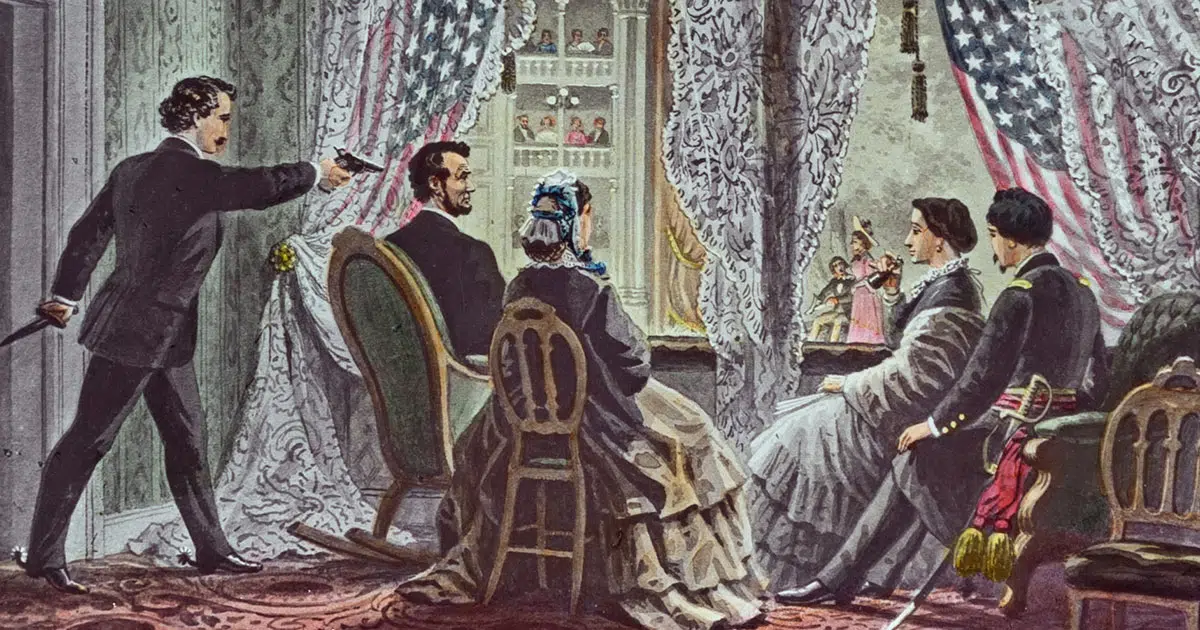
The Lincoln Assassination
On April 14, 1865, Abraham Lincoln attended the play “Our American Cousin” at Ford’s Theatre in Washington, D.C.
Featured in Ripley's Believe It or Not!

On April 14, 1865, Abraham Lincoln attended the play “Our American Cousin” at Ford’s Theatre in Washington, D.C.
It would be the last time anyone saw the President alive.

That night, an actor and Confederate sympathizer named John Wilkes Booth slipped into Lincoln’s private box and fired his .44-caliber Derringer pistol into the back of the President’s head.
Booth then leaped from the box onto the stage, where he ended up breaking his leg. He shouted “Sic semper tyrannis!” which happened to be the state motto of Virginia. Translated from Latin it means “Thus ever to tyrants!”
As Booth made his escape, Lincoln was taken to a house across the street where he died at 7:22 a.m. the following day. He was 56.
Booth was eventually found and shot by Union soldiers, and four of his co-conspirators were put to death. In an ironic twist, Lincoln was shot just five days after Confederate General Robert E. Lee surrendered his army at Appomattox Court House in Virginia, effectively ending the war.
But that was far from the strangest thing to happen surrounding the President’s assassination.
Here are 10 other strange facts:
They were, technically, not mobilized yet. Because, in an even more ironic twist, Lincoln signed the bill to create the Secret Service the night before he went to see the play.
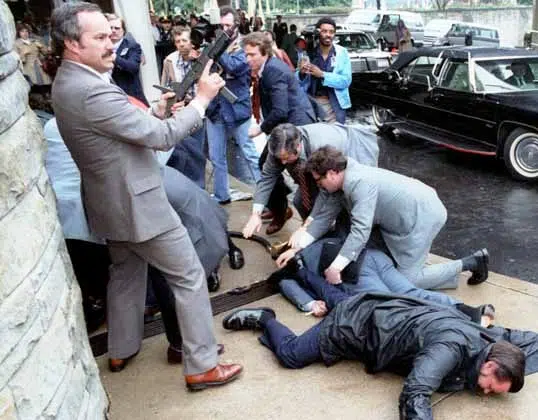
Secret Service agents thwarting an assassination attempt on Ronald Reagan.
His name was John Parker. And he has become famous—or infamous—because he went to the saloon next door during intermission and never returned.
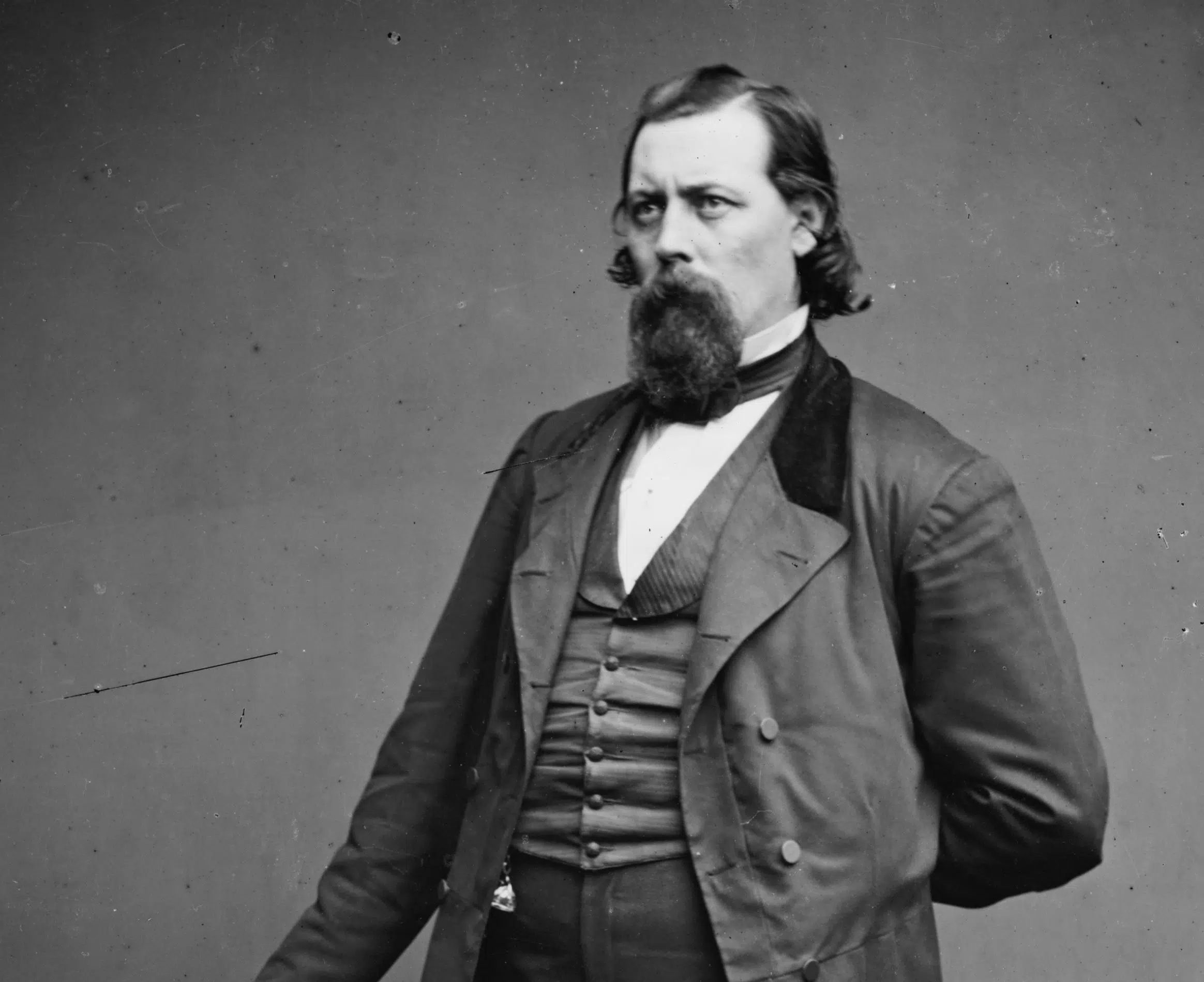
Lincoln’s long-time bodyguard, Ward Hill Lamon, had switched out from protecting Lincoln just before the trip.
The answer is, they did not fare well. After the shooting, Booth then slashed diplomat Henry Reed Rathbone’s left arm, and while Rathbone eventually recovered from the stabbing, he undoubtedly suffered from post-traumatic stress. Just before Christmas 1883, he killed his wife (the other member in the box that night) before trying to stab himself. Again, he survived and lived the rest of his life in an asylum. The fourth person in the box that night was Mary Todd Lincoln, who was also sent to an asylum in 1875.
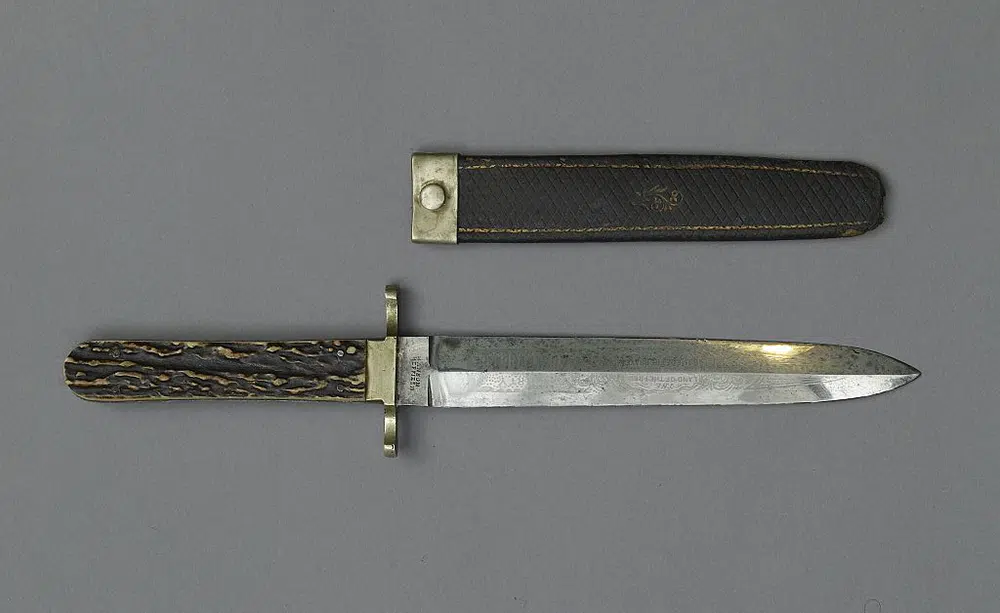
John Wilkes Booth’s dagger.
Let’s just say it wasn’t the first time he’d threatened the President at Ford’s Theatre. Two years prior to the shooting, on Nov. 9, 1863, Booth starred in a performance of “The Marble Heart” at the theatre. The Lincolns were present, and at least two times Booth used instances in the play to hurl insults at the President. A third time, he even pointed at Lincoln, which the President noted afterward. It was a harbinger of the violence to come.

John Wilkes Booth, left, as Caesar.
John Wilkes Booth’s brother, Edwin, died on June 7, 1893. At the exact time his funeral took place at the Church of the Transfiguration in New York City, a 40-foot section collapsed from the third floor of Ford’s Theatre, killing 22 people.
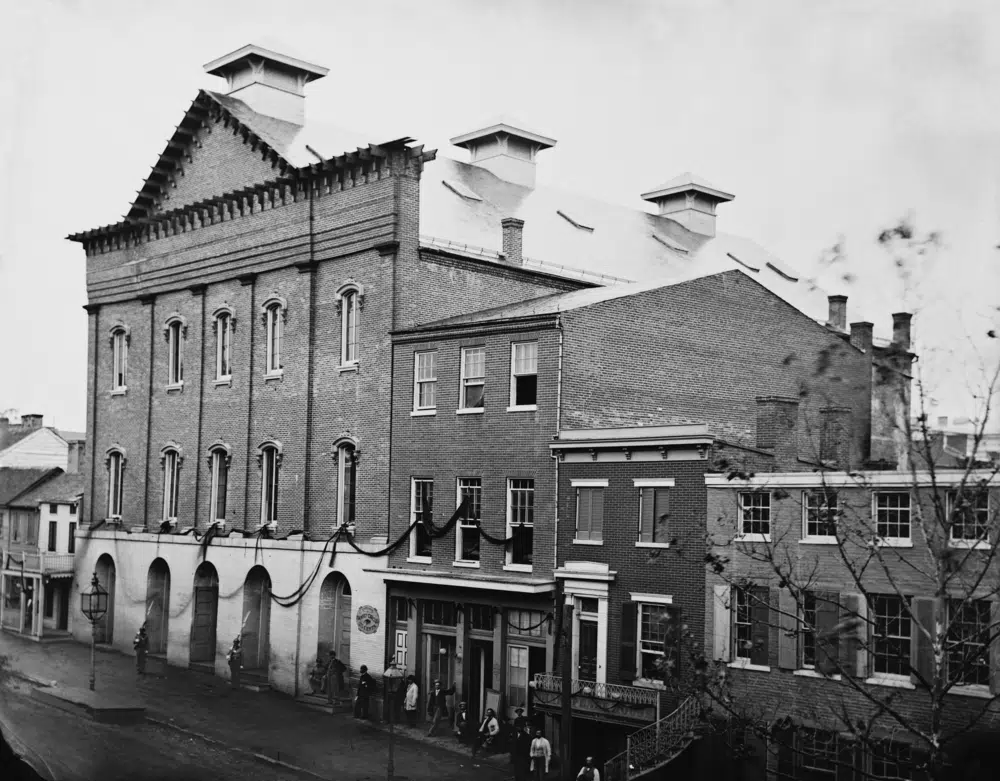
Interestingly enough, Edwin was a hero — he saved the life of Lincoln’s son months before the assassination. Robert Lincoln fell on to a New Jersey train track before Edwin pulled him to safety.
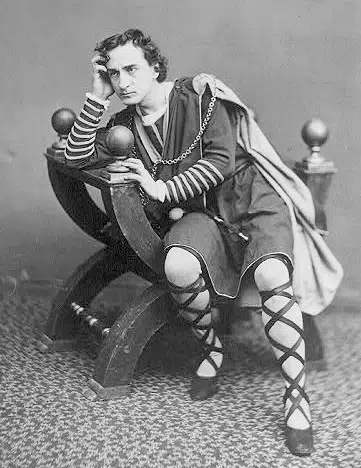
Edwin was an actor, like his brother. Here he’s portraying Hamlet.
During the play, the President leaned over and held his wife’s hand, something that was considered rather scandalous for the day. Mary Todd Lincoln asked her husband what Rathbone’s fiancée would think, and the President responded: “She won’t think anything about it.”

He was taken to the house of William A. Petersen, a tailor. On June 19, 1871, Petersen accidentally took too much alcohol and opiates and was found passed out on a local park bench. After medics tried to pump his stomach, he passed away. His wife died exactly three months later.
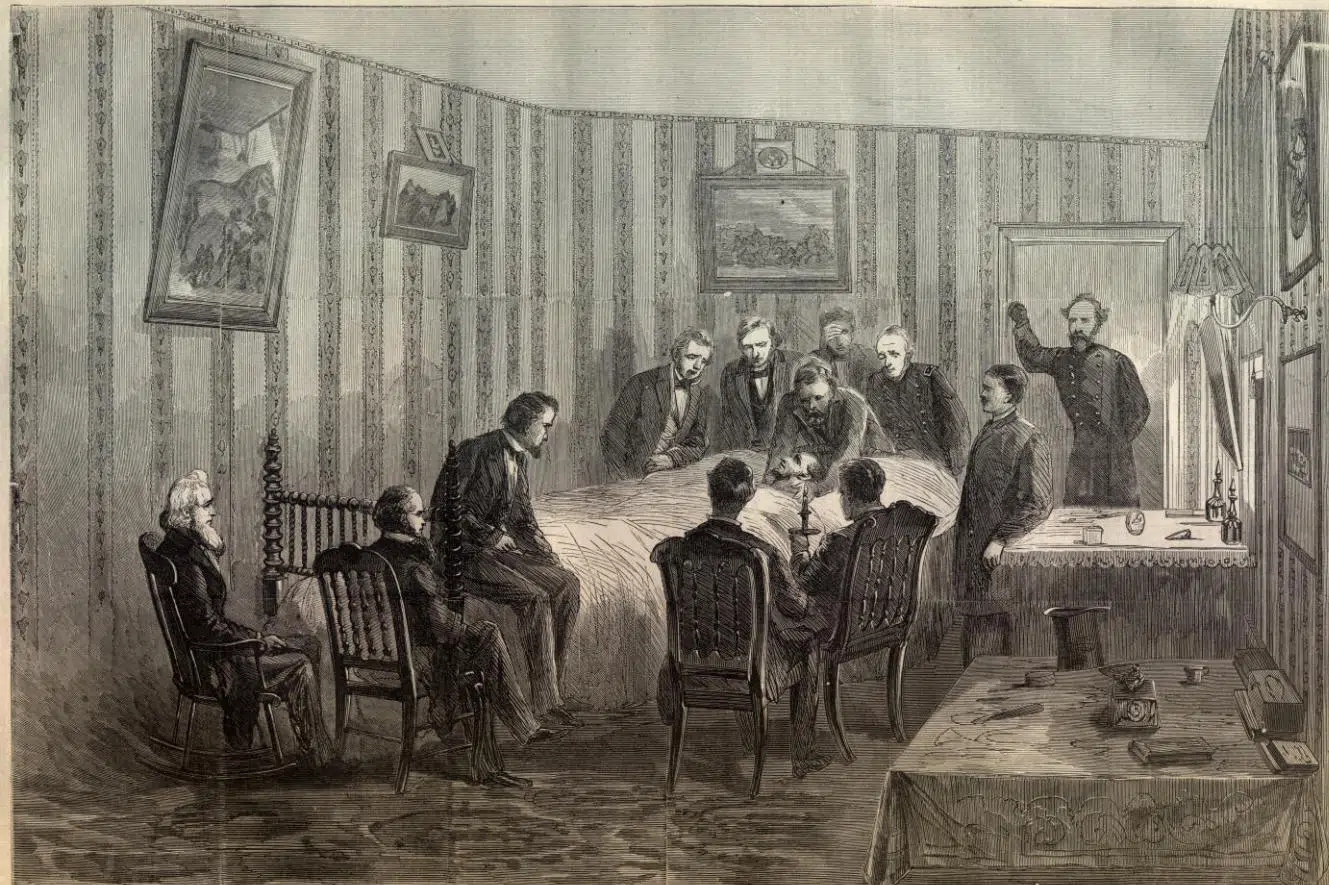
Lincoln’s deathbed at the Petersen House.
That would be family friend Dr. Anson G. Henry, who moved back to Illinois with the former First Lady in May 1865. Unfortunately, just a few months later he drowned when the ship he was a passenger on, Brother Jonathan, sank off the coast of California.
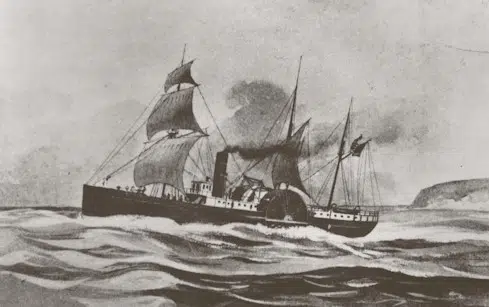
The SS Brother Jonathan
Robert was in the White House when his father was shot at the theater. On July 2, 1881, he was with President James A. Garfield at the local railroad station when Garfield was shot by assassin Charles J. Guiteau. And on Sept. 6, 1901, when President William McKinley was shot by Leon F. Czolgosz in Buffalo, Robert was just arriving into the city on a train. Maybe folks just needed to stay away from that kid.
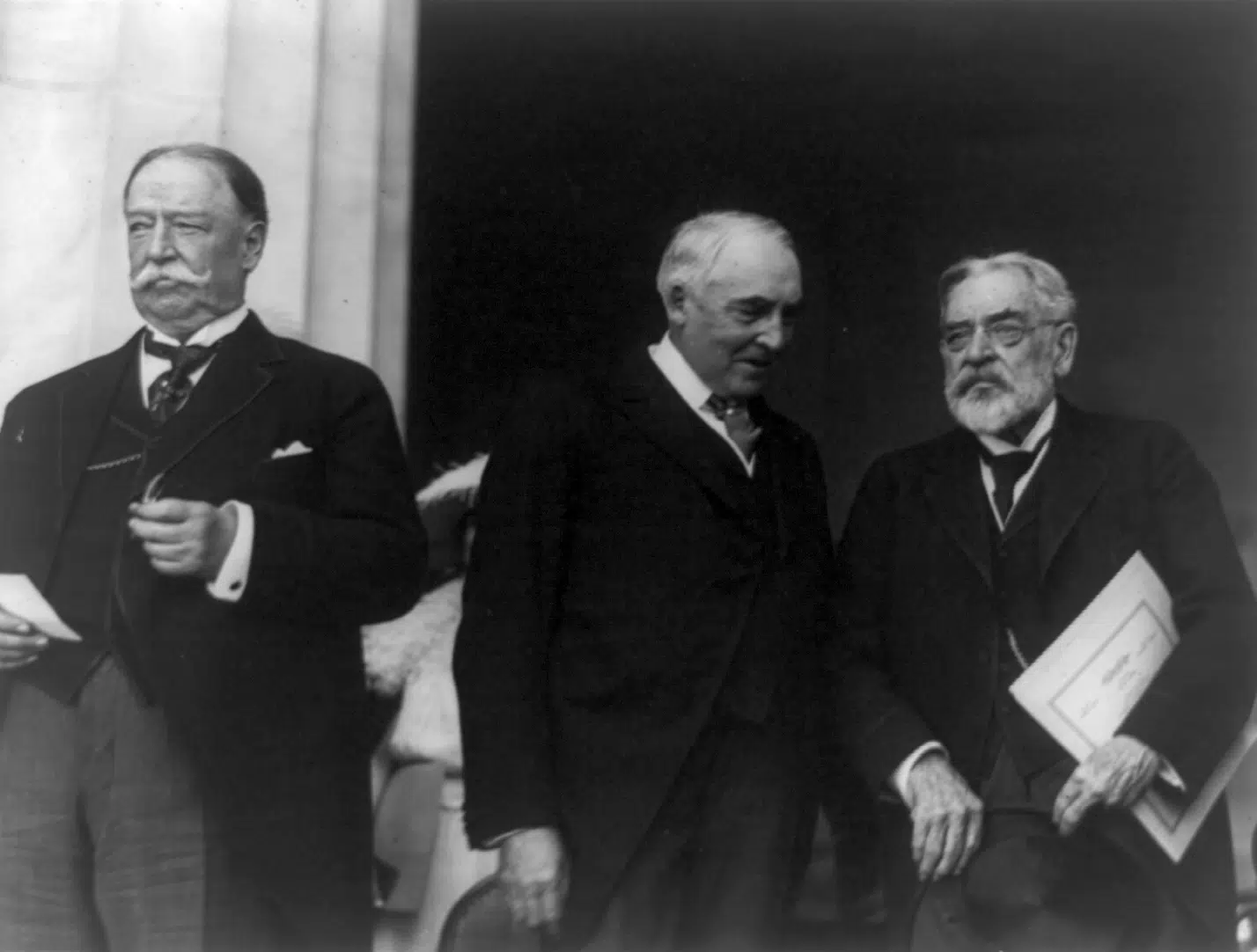
Robert Lincoln (right) with Warren Harding and William Taft.
Believe it or not, the particulars of John Wilkes Booth’s actions in the ensuing manhunt largely remain a mystery. Regarded as one of the most important historic items in the Ripley’s collection, a pistol inscribed with “J. Wilkes Booth,” thought to be left behind on the stage the night of the assassination is presently held at our Baltimore Odditorium.
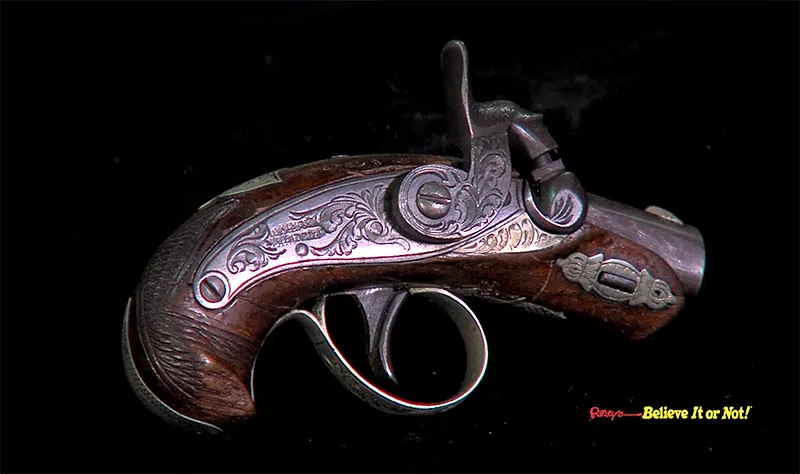
By Ryan Clark, contributor for Ripleys.com
Source: Questions Surrounding The Assassination Of Abraham Lincoln


